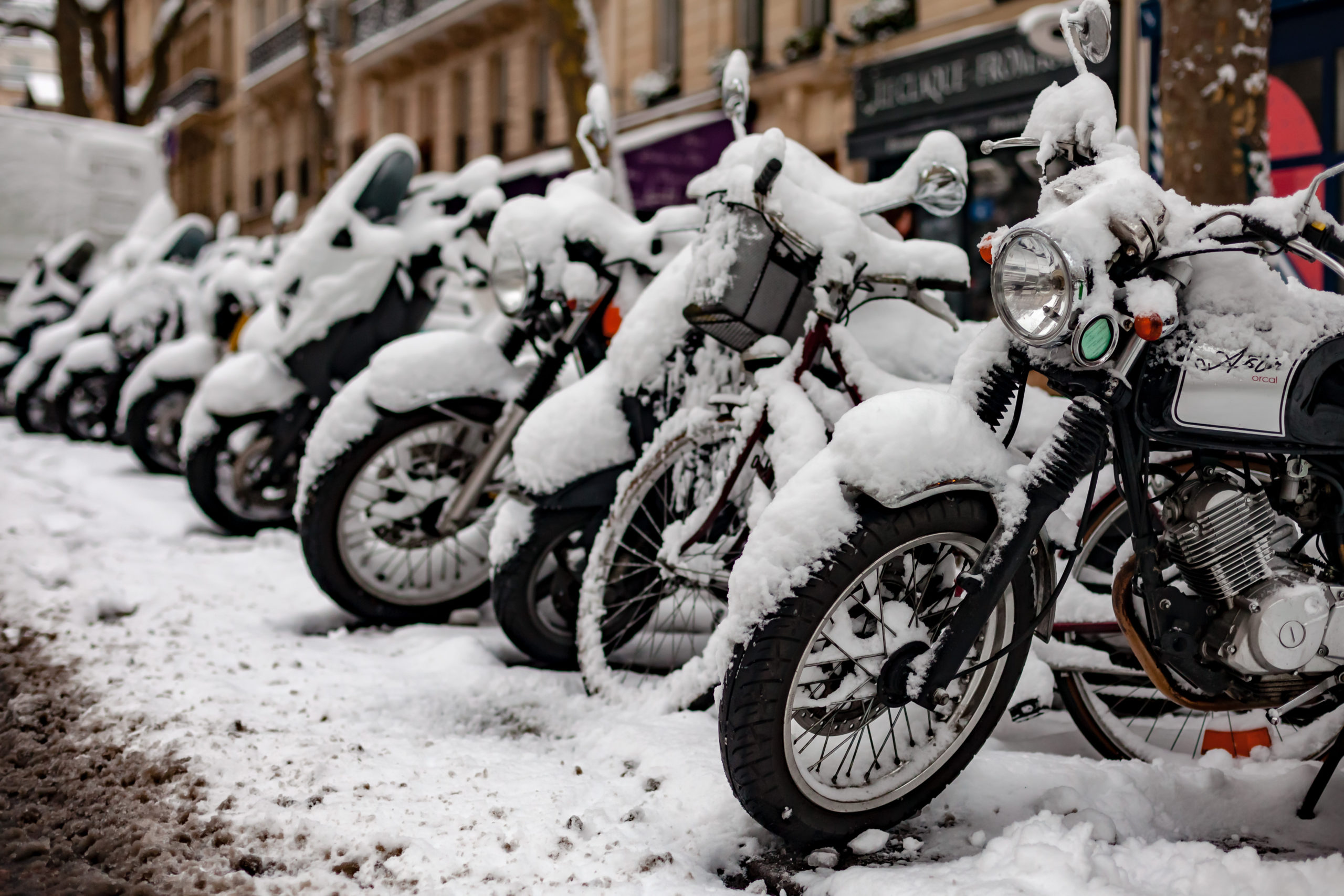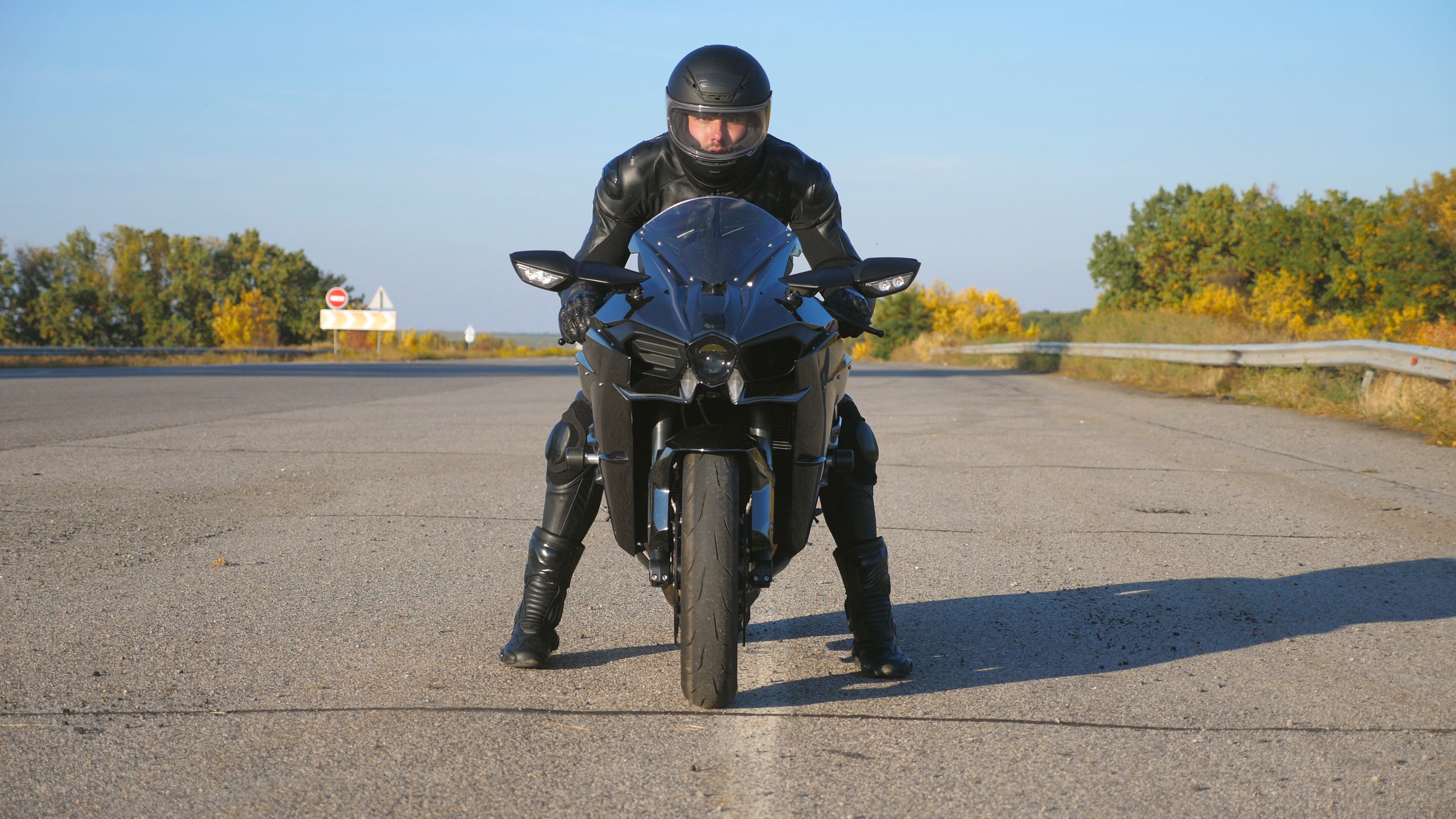
Winter riding can be exhilarating and beautiful, but it also comes with unique challenges and risks. To ensure that you stay safe and comfortable on your motorcycle during the colder months, it's essential to properly prepare both your bike and yourself.
How to Prepare Your Motorcycle and Yourself for Winter Riding
‘Winter is coming’, is a phrase made popular by Game of Thrones but ideology motorcyclists have lived by for around a century. Like it or not, winter is coming and, as a motorcyclist, it’s your duty to know how to prepare your motorcycle and yourself as a rider.
Some find winter riding daunting but, if you’ve set up properly, there’s a satisfaction in knowing you’re prepared for whatever mother nature throws at you.
Maintenance
If your motorcycle is even close to needing a service, get it done before the wintery weather sets in. Parts that are prone to wear will wear out much more quickly in winter. These are some things you should keep in mind when servicing.
- Coolant: If your engine is water-cooled then checking the coolant is a must. You can use a hydrometer to check its antifreeze property. If you don’t have a hydrometer, a good general rule is to drain and replace the coolant if it hasn’t been replaced in a few years.
- Chain and sprockets: Grit and salt will slowly eat away at your chain and sprockets, or quickly depending on how you look after them. Taking care of your chain and sprockets is an ongoing task. Frequent chain-lubing is essential, as is an occasional clean.
- Keeping clean: Keeping your motorcycle clean throughout winter is overlooked by some but is seriously important. This is another ongoing task and, depending on where you live and what kind of winter you’re having, you might need to wash your motorcycle after each ride or once every 1-2 weeks. Another option is to apply a layer of grease or chain lube over exposed surfaces before winter, then wash off with paraffin when the weather gets better.
- Brake systems: Grit gets into every nook and cranny during winter, and brake systems are no different. Exposed areas of the pistons should be greased with specialist brake grease. Regular washes are also advised, then a quick blast from an aerosol brake cleaner followed by some grease.
- Switchgear and electrical units: Moisture will corrode switchgear and electrical units over winter. Exposed electrical connections are the most vulnerable, so make sure to go over them with some WD40. If there is any exposed or fraying electric cabling, make sure to get it replaced as soon as possible.
- Battery: Before winter, you’ll need to check your battery terminals, make sure they’re securely connected and clean them if necessary. If your battery is old, consider replacing it. Batteries work less efficiently in chilly weather, so old ones will suffer even more. Putting Vaseline over the terminal connections will help protect them.
Motorcycle Modifications
Whether you want toasty fingers or to stop grit building up all over your engine, there’s a modification out there.
- Bolt-on plastics: Things like belly pans and fender extenders are really easy to put on and can save you a lot of hassle. Mainly, they’ll help stop vulnerable parts of your motorcycle from getting encrusted with grit. Attaching or extending a windshield is never a bad idea and something you will notice on the highway, especially if you ride a naked one.
- Tires: During the winter, sports tires rarely get up to working temperature, meaning they won’t be that ‘sticky’. Touring tires have a lower working temperature and are more effective in the winter. If you’re using a good pair of sports tires, you can just pop them off and put them on again when the sun comes back out.
- Hot hands: Frozen fingers, a blight for any motorcyclist who rides through winter. Hot grips will keep your palms at a nice temperature but the outsides of your hands will get cold if you’re riding for any considerable time. You could couple hot grips with hand guards to solve this problem or you could get a pair of muffs. Although muffs won’t do anything for your street cred, they work like a dream and will keep your hands toasty all the way through to spring.
- Lights: Longer nights call for better lights. There are plenty of aftermarket bulbs that will illuminate better than your standard bulbs. If you really want to light up the road, you won’t go wrong with a High-Intensity Discharge (HID) kit.
- Automatic chain lubricant: If you’re the forgetful type and don’t think you’ll tend to your chain and sprockets enough over winter, an automatic chain lubricant might save you some heartache.
Gear up
There’s no such thing as bad weather, just the wrong clothes – a saying every motorcyclist needs to know.
- Layers: Layering is so important in winter and it all starts with a good set of base layers. There are base layers to cover almost every inch of your body and they’re great for trapping heat.
- Linings: Lots of gear has a removable thermal lining, if yours does, make sure that it’s in.
- Waterproof: Lots of gear claims to be waterproof but can’t stand up to a light shower. Make sure you do some research and buy legitimately waterproof gear. Gore-Tex or laminate jackets and pants are pricey but should keep you bone dry.
Preparing as a Motorcyclist
Winter modifications and top-of-the-range gear will make life easier but, mostly, how you ride will determine if you have a safe winter or not. These are a few things to bare in mind while riding through winter.
- Get used to your gear: Whether you’ve decided to layer up or insert your gear’s thermal lining, you will feel more restricted and it could be uncomfortable. You’ll also have a reduced feel of your controls if you wear thicker gloves. Get used to your winter gear by going for a few leisurely rides, until wearing it feels normal.
- Watch out: Black ice is a killer and something to be mindful of on every winter ride. Take note of the places it usually forms on your regular route and, if you’re riding an unfamiliar road, be extra cautious. Likewise, a salted road can be just as slippery as black ice, so if you see crystallized pieces of salt, stay away.
- Cold tires: Even if you’ve put on a good pair of touring tires, they’ll still take a while to heat up. Remember this and take it easy until you’re sure there’s some heat in them. Hard accelerating and decelerating is the best way to get heat into tires, but it goes without saying to be extra careful if doing this.
- Riding style: While we should always aim to have a smooth riding style, in winter it needs to be extra smooth: smooth braking, cornering, and acceleration. You’ll also need to put a few more lengths between you and the car in front.
- Know when to call it a day: Arguably, the most important winter riding tip is to know when not to ride. Sometimes it’s just not worth the risk.
Posted in Announcements

 Jake "The Jet" Thompson
Jake "The Jet" Thompson